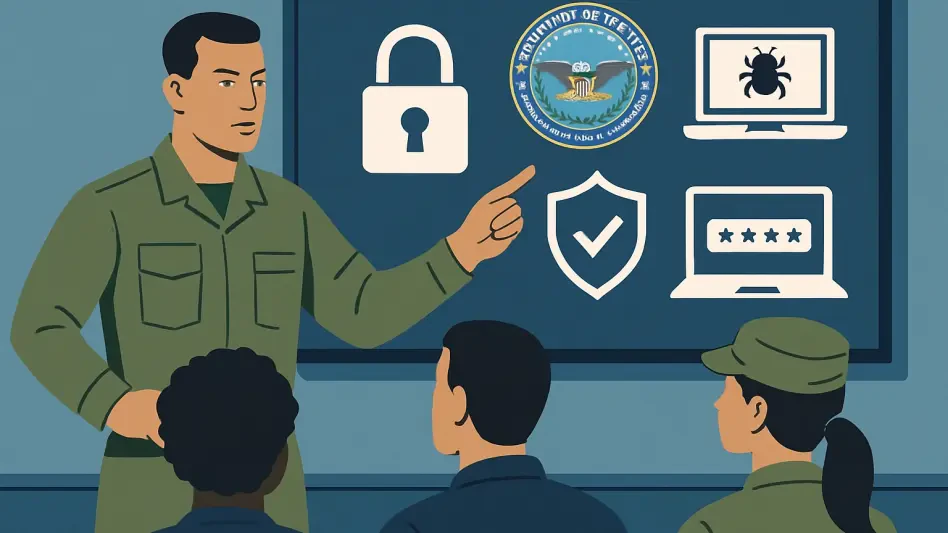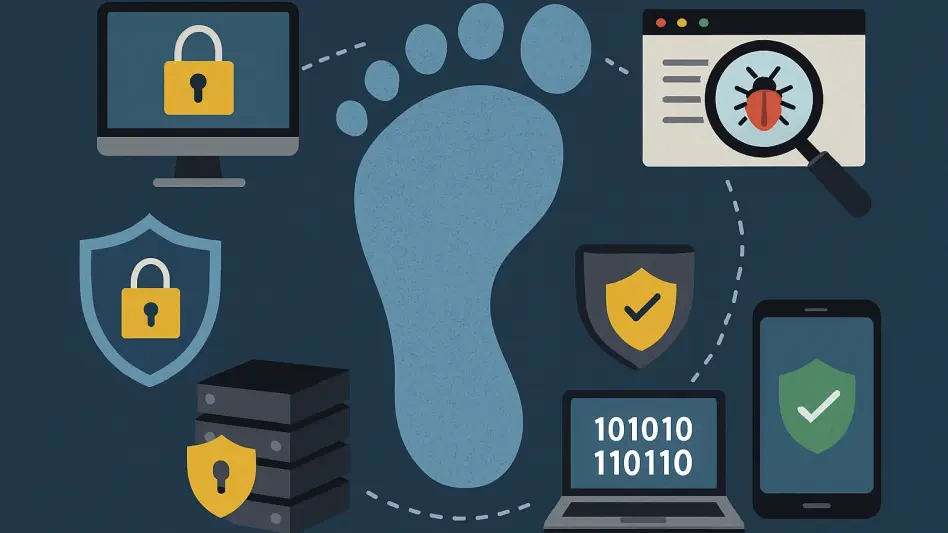In a decision that has sent ripples through the defense community, the Department of Defense (DOD) recently announced a significant reduction in mandatory cybersecurity training for military personnel, as directed by Defense Secretary Pete Hegseth on September 30. This policy shift, part of a broader overhaul under the Trump administration’s rebranded “Department of War,” prioritizes warfighting readiness over what some view as peripheral administrative tasks. At a time when cyber threats from nations like China, Russia, and Iran are escalating, the move has ignited a fierce debate about whether scaling back such training could expose critical vulnerabilities. The balance between operational efficiency and robust digital defense has never been more precarious, especially as adversaries increasingly exploit cyber warfare to disrupt military operations. This development raises urgent questions about the readiness of U.S. forces to counter sophisticated digital attacks while maintaining focus on core missions, setting the stage for a deeper examination of the policy’s implications.
Unveiling the Policy Shift
The directive from Hegseth introduces sweeping changes to mandatory training programs within the DOD, with a primary emphasis on reducing the frequency of cybersecurity education. Alongside this, the policy targets other areas for reform, such as tailoring records management training to specific roles, automating information systems to minimize manual training needs, and relaxing requirements for handling controlled unclassified information. Additional measures include removing Privacy Act Training from the standard military curriculum and consolidating various training topics into a more streamlined framework. The overarching goal is to eliminate perceived inefficiencies that burden service members, redirecting their time and energy toward combat preparedness. This restructuring reflects a deliberate pivot away from administrative obligations, aiming to sharpen the military’s edge in an era of complex global threats. However, the specifics of how these reductions will be implemented remain under scrutiny, as the potential for unintended gaps in security looms large.
Central to the rationale behind these cuts is the belief that excessive mandatory training detracts from the core mission of fighting and winning wars. Hegseth’s memo underscores a commitment to enhancing lethality by minimizing distractions, a perspective that resonates with many service members who often find such sessions repetitive or disconnected from their daily duties. Cybersecurity training, in particular, has been criticized for lacking relevance or engagement, with content that fails to address the nuanced challenges faced on the ground. By scaling back these requirements and introducing flexibility in delivery methods, the policy seeks to address long-standing frustrations while fostering a mission-focused culture. Yet, this approach assumes that the time saved will directly translate into improved readiness, an assumption that critics argue overlooks the integral role of cyber defense in modern military strategy. The tension between streamlining operations and maintaining robust security protocols is a defining challenge of this initiative.
Expert Warnings on Cyber Risks
Cybersecurity experts and defense analysts have reacted with alarm to the decision to reduce training, warning that it could severely undermine national security at a critical juncture. With adversaries employing increasingly sophisticated tactics—ranging from phishing schemes to AI-driven impersonations—the need for comprehensive cyber education has never been greater. Peter W. Singer, a prominent strategist, argues that instead of cutting back, the DOD should modernize its training programs to tackle emerging threats like cognitive warfare and deepfake technologies. The concern is that diminished focus on cyber awareness could create exploitable weaknesses, allowing hostile actors to infiltrate networks or disrupt operations with devastating consequences. As digital warfare becomes a central battlefield, experts stress that every service member, regardless of role, must be equipped to recognize and mitigate risks, making the timing of these reductions particularly ill-advised.
Further intensifying the critique, analysts point out that the efficiency gains from reducing training are minimal compared to the potential costs of a cyber breach. Lauryn Williams from the Center for Strategic and International Studies notes that the time saved—often just an hour or two annually per person—pales in comparison to the value of maintaining vigilance against digital threats. Retired Rear Adm. Mark Montgomery adds a layer of skepticism, describing the policy as more symbolic than substantive, especially when weighed against the persistent cyber aggression from entities like the Chinese Communist Party. The consensus among critics is that the DOD risks prioritizing short-term relief over long-term security, potentially leaving sensitive data and mission-critical systems exposed. This perspective challenges the notion that cybersecurity training is a distraction, framing it instead as an essential pillar of military readiness in an interconnected world.
Military Insights on Digital Defense
Senior defense officials have long emphasized the importance of cyber hygiene as a mission-critical component across all ranks, a stance that starkly contrasts with the recent directive. Charleen Laughlin, deputy chief of space operations for cyber and data in the Space Force, has highlighted that every digital interaction—whether clicking a link or applying a software patch—carries implications for operational success. Her view is that cyber awareness transcends the realm of IT specialists, impacting every service member’s ability to safeguard their unit’s objectives. Laughlin acknowledges the often-ridiculed nature of programs like the Cyber Awareness Challenge but insists that such training is fundamentally tied to readiness. This perspective underscores a broader recognition within the military that digital defense is not a peripheral concern but a core element of maintaining effectiveness, raising questions about how the DOD will compensate for the gaps created by reduced training mandates.
Adding to this discourse, Brig. Gen. Joy Kaczor of the Air Force has stressed the need for vigilance against insider threats, which often arise not from malice but from simple negligence. Whether it’s mishandling a device or falling for a suspicious email, these lapses can have cascading effects on mission integrity. Kaczor advocates for detailed contingency planning and mapping out mission requirements to ensure continuity in the face of cyber incidents, reflecting a proactive approach to digital risks. Her insights reveal a disconnect between the policy’s focus on cutting training and the on-the-ground reality faced by personnel who must navigate an ever-evolving threat landscape. The emphasis on preparedness over reduction suggests that many within the military view cyber education as indispensable, a sentiment that complicates the narrative of training as a mere administrative burden and highlights the need for a balanced strategy.
Balancing Efficiency and Security
The broader trend within the defense sector points to an escalating recognition of the cyber domain as a pivotal arena in modern warfare, where even minor oversights can yield catastrophic outcomes. Adversaries are actively targeting U.S. military infrastructure with increasingly complex attacks, necessitating a workforce that is both alert and adaptable. While Hegseth’s directive aims to enhance operational focus by trimming non-essential tasks, critics argue that cybersecurity is far from extraneous—it is a fundamental aspect of readiness. The debate hinges on whether the minimal time savings justify the potential vulnerabilities introduced by reduced training. Experts advocate for a middle ground, suggesting that modernizing content to address current threats, rather than scaling back, could reconcile efficiency with security. This tension reflects a larger challenge for the DOD in adapting to 21st-century warfare without compromising on critical defenses.
Ultimately, the success of this policy will depend on the DOD’s ability to implement compensatory measures that preserve cyber resilience. The directive’s intent to refocus on warfighting is grounded in valid frustrations over training overload, yet the reality of digital threats demands a robust response. Looking back, the decision to cut mandatory cybersecurity training stirred significant controversy, as it revealed deep divisions over how best to prepare for modern conflicts. Moving forward, the path lies in innovative solutions—perhaps through targeted, engaging training modules or advanced automated defenses—that ensure service members are not left exposed. The challenge remains to integrate these reforms without sacrificing the security that underpins every mission, urging a reevaluation of how readiness is defined in an era where digital and physical battlefields are inextricably linked.








